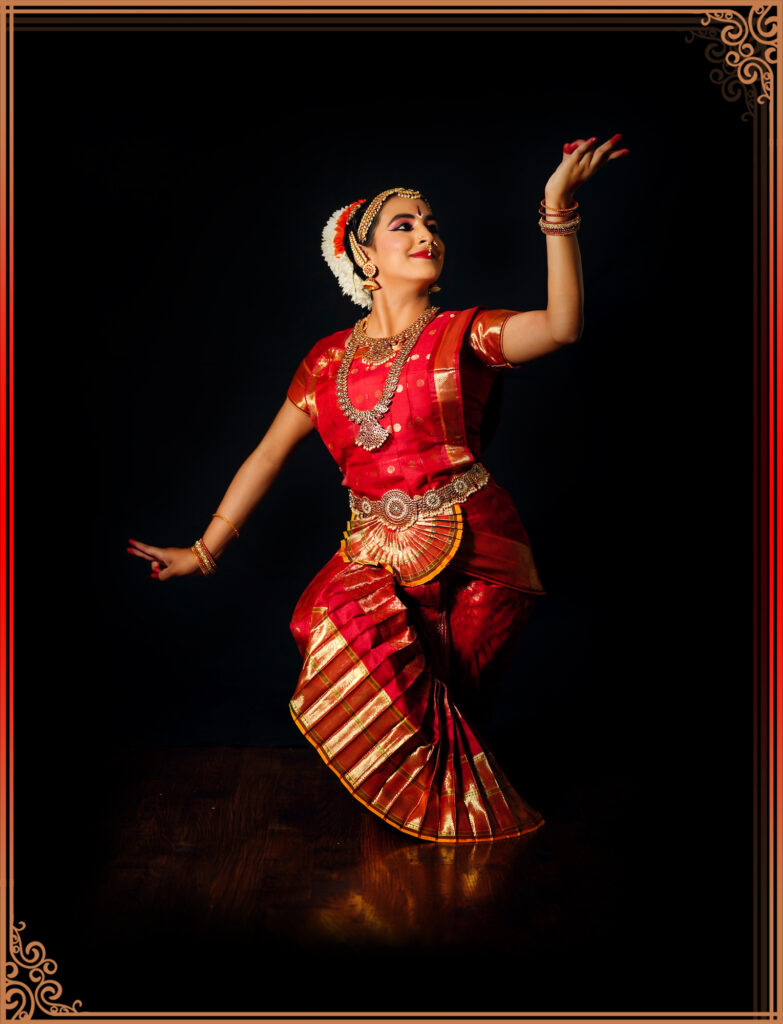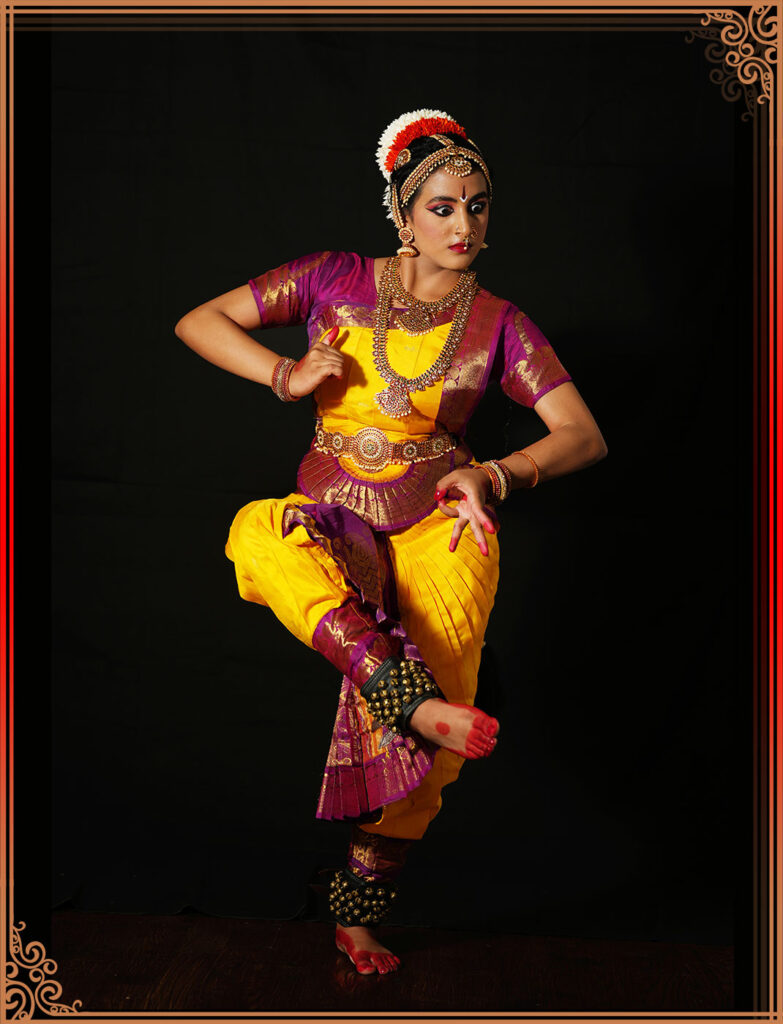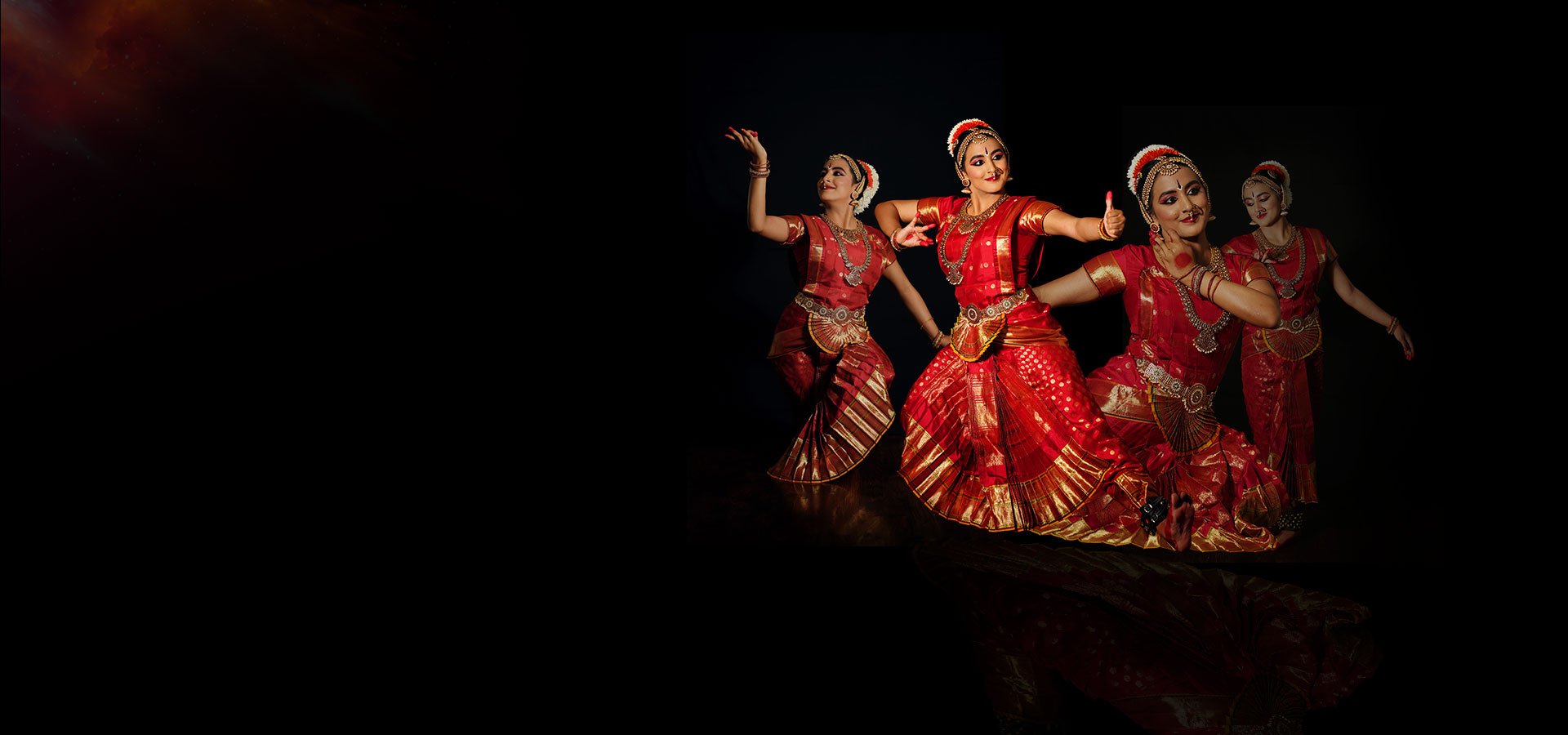BHARATANATYAM
Bharatanatyam is one of India’s most popular and widely practiced classical dance styles, with sculptural evidence dating back to more than 2000 years.
The name of the dance form was derived by joining two words, ‘Bharata’ and Natyam’ where ‘Natyam in Sanskrit means dance and ‘Bharata’ is a mnemonic comprising ‘BHA’, ‘ra’ and ‘ta’ which respectively mean ‘bhava’ that is emotion and feelings; ‘raga’ that is a melody; and ‘tala’ that is rhythm. Thus, the name refers to a dance form where bhava, raga, and tala are expressed.
Bharatanatyam is comprised of three main aspects – nritta, or technical dance, with a sophisticated base vocabulary used to build intricate combinations and rhythmic patterns that do not convey any specific meaning; nritya, or expressional dance, using facial expressions, highly stylized gestures, postures, and body language to convey any mood; and Natya, or dramatic storytelling. All of these aspects are codified in the Natya Shastra, the ancient Indian treatise on dance and theater arts, and are used in harmony to uplift the audience and the dancer to a higher level of contentment and spiritual consciousness.


ARANGETRAM
A Bharatanatyam arangetram is the first formal debut solo performance of a student practicing this beautiful art form. This rite of passage signifies that the student has finished learning the fundamentals of the art form. Preparing for an arangetram requires rigorous training and stamina building, and displays immense amounts of dedication from the student and guru.
MARGAM
Margam means a path or a course followed. It is the traditional sequence of dances that is practiced in Bharatanatyam. After learning the entire margam, the dancer is equipped with the basic knowledge of the dance form. The sequence of the margam show cases each skill in order: preciseness, expression, and endurance. Each dance portrays a different skill that the dancer has acquired through his/her dance process.
The Margam that Anika will be presentings consists of invocatory items Anandha narthana ganapathim and Thodaya Mangalam, Nritta padam Tha thai enru Aduvar , Varnam, Nadar mudi melerrukum naga pambe, Ambal stuthi , Jaavali and conclude the program with Dhanashree Thillana.


VAZHUVOOR STYLE OF BHARATANATYAM
The Vazhuvoor style of Bharatanatyam which originated in the village of Vazhuvoor in Tamil Nadu, India, is the native place of Sri Ramaiah Pillai, who popularised this style of Bharatanatyam. This rich style focuses on the beauty of movement, picturesque poses blending with a charming, graceful technique that gives visual delight.
The dance steps of the Vazhuvoor style are crisp and intricate but combined with grace and beautiful eye movements. Poses are often introduced to add space in time. The jatis or nritta units have more karvais or gaps than usual to add a sense of time being suspended giving the dance an exciting quality. The body from the waist up is slanted slightly forward to give more dimensions to the body. The adavus or dance units are done smoothly without too many jerky movements to give an impression of effortlessness and elegance.
Abhinaya or narrative expression is subtle with naturally stylized expressions and there is no obviousness in the presentation. The hands, eyes, and expressions are used in unison to express eloquently. Lasya, or grace, is predominant in this style. Traditionally, a performance in the Vazhuvoor style begins with a Thodaya Mangalam in praise of Lord Gnana Sabesar of Vazhuvoor village.


